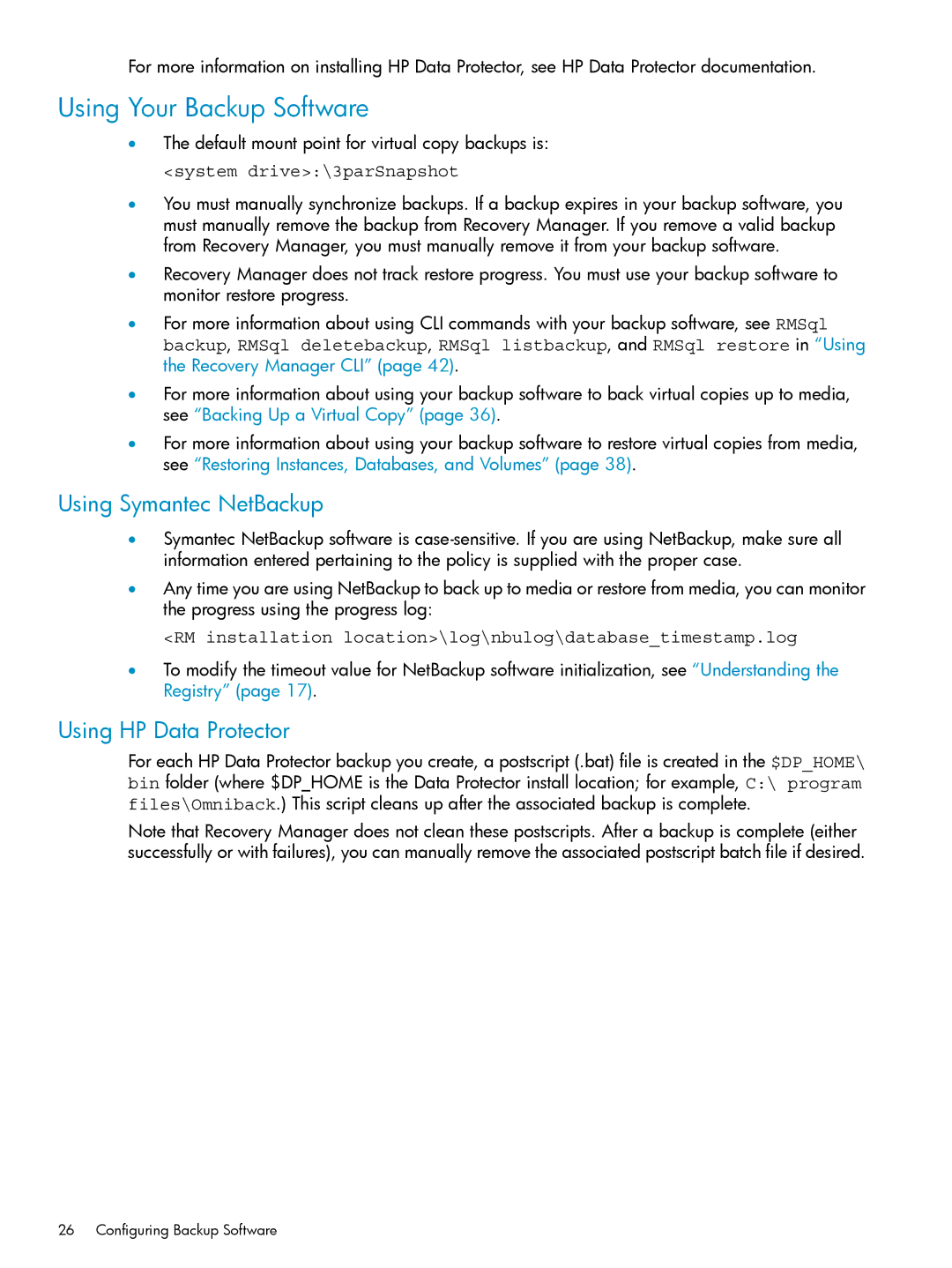For more information on installing HP Data Protector, see HP Data Protector documentation.
Using Your Backup Software
•The default mount point for virtual copy backups is:
<system drive>:\3parSnapshot
•You must manually synchronize backups. If a backup expires in your backup software, you must manually remove the backup from Recovery Manager. If you remove a valid backup from Recovery Manager, you must manually remove it from your backup software.
•Recovery Manager does not track restore progress. You must use your backup software to monitor restore progress.
•For more information about using CLI commands with your backup software, see RMSql backup, RMSql deletebackup, RMSql listbackup, and RMSql restore in “Using the Recovery Manager CLI” (page 42).
•For more information about using your backup software to back virtual copies up to media, see “Backing Up a Virtual Copy” (page 36).
•For more information about using your backup software to restore virtual copies from media, see “Restoring Instances, Databases, and Volumes” (page 38).
Using Symantec NetBackup
•Symantec NetBackup software is
•Any time you are using NetBackup to back up to media or restore from media, you can monitor the progress using the progress log:
<RM installation location>\log\nbulog\database_timestamp.log
•To modify the timeout value for NetBackup software initialization, see “Understanding the Registry” (page 17).
Using HP Data Protector
For each HP Data Protector backup you create, a postscript (.bat) file is created in the $DP_HOME\ bin folder (where $DP_HOME is the Data Protector install location; for example, C:\ program files\Omniback.) This script cleans up after the associated backup is complete.
Note that Recovery Manager does not clean these postscripts. After a backup is complete (either successfully or with failures), you can manually remove the associated postscript batch file if desired.
26 Configuring Backup Software
